https://www.lifegate.it/stop-nuovo-codice-della-strada
- |
There are over 40 cities that have joined the national mobilizations organized by a dense network of associations, who together with activists, citizens and citizens oppose the revision of the Highway Code proposed by the Ministry of Infrastructure and Transport (MIT), under discussion in parliament these days.A reform bluntly renamed “Code of the massacre“, for the superficiality with which it addresses the issue of safety, with measures that do not focus on prevention and above all do not intervene on what – numbers and studies in hand – are the main causes of fatal collisions.
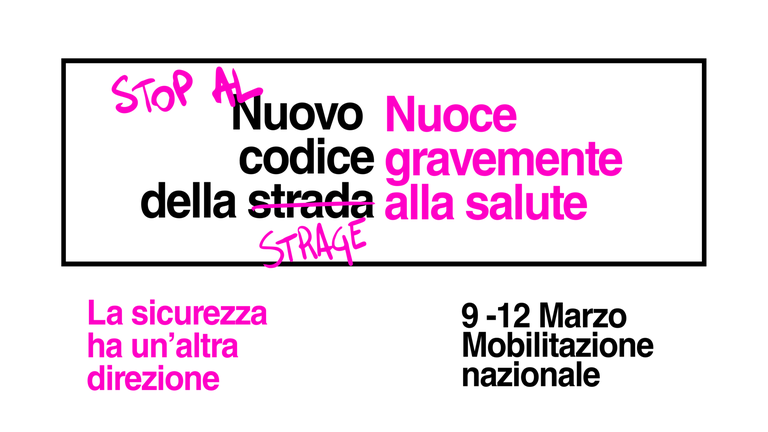
As experts reiterate, this legislation ignores a scientific and systemic approach, so it will make us take a leap back in time, worsening the dramatic situation of our country, the one with the highest number of victims in Europe. Every three hours, Indeed, in Italy a person loses his life on the road.With good reason, the term "massacre" is used to denounce what is in fact the violent killing of a multitude of people which goes unnoticed and which will not be stopped by this legislation.The upcoming mobilizations lead us to reflect on the political, collective and individual responsibility for these deaths and to deal with a non-negligible factor:there speed, an indispensable requirement of our movements which, more or less consciously, is taking us off course
Against the revision of the Highway Code:flash mobs, demonstrations and mail bombing
Flash mobs, static demonstrations, human cycle paths and other events are organised from 9 to 12 March, to denounce what are defined as "showcase measures" proposed by the MIT.TO Rome on the morning of Sunday 10 March, in Piazza Sant'Apostoli, the participants will wear white overalls stained with red And faceless masks to represent the violence suffered by road victims.
TO Turin Tuesday 12 March between 7.30 and 10.30 (commuter time), near the Porta Nuova station there is a die-in along the lines of a pedestrian crossing, during the green times of the pedestrian traffic lights, for which the participants will position themselves along the streets.
Symbolic gestures that aim to give a visual representation of the problem, acting in public space and involving passers-by, to offer a different, more aware look at dramatically possible scenarios.The attempt to give substance to the numbers of victims it also happens thanks to installations of objects (helmets, shoes, bikes lying on the ground) who want to awaken consciences and give an account of the "dimension" of the problem, with a message aimed not only at the government but at the citizens.
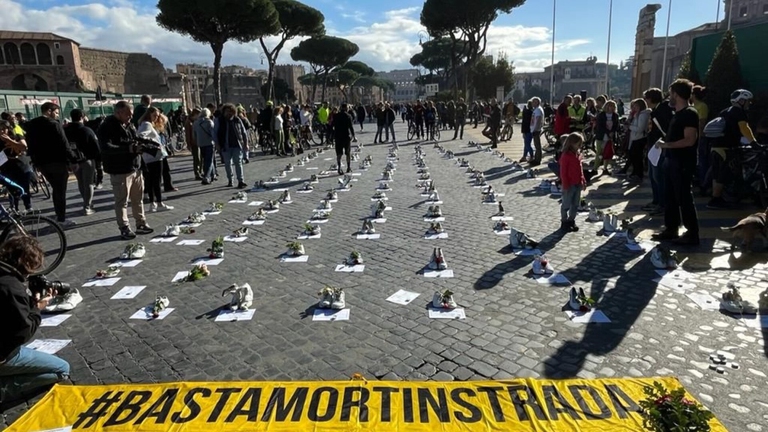
In many municipalities the attention is brought up sensitive points.For example a Florence on Saturday 9 March at 11.00 a flash mob in Piazza Alberti will facilitate the passage of pedestrians and cyclists by protecting pedestrian and cycle crossings, with the measurement of the speed of vehicles arriving from the overpass to highlight the systematic failure to respect speed limits.TO Bologna instead one will be created human chain to defend the cycle lane of via Saragozza from the wild parking of cars.There are many cities where flash mobs or bike rides will end in front of prefectures, as for example in Milan.
The call to action is also digital.A project has been underway for a couple of days mail bombing (over 6,000 emails sent up to Friday 8 March) addressed to parliamentarians who will be called to vote on the reform.«Should I be the next innocent road victim caused by the New Code, the political responsibility for the same would also fall on those - among you - who vote in favor or in any case do nothing to stop the New Massacre Code.You still have time to stop this revision of the Code, you still have time to save my life", are the words we find in the message sent via email.
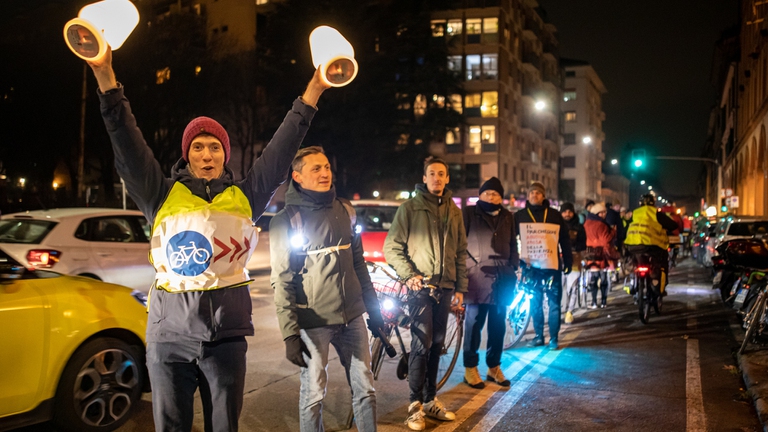
The request:safety of people and more liveable cities
The request of the mobilizations is one: safety of people and most livable cities in first place.
The numbers speak clearly and describe a serious situation.They are indeed 3,159 people will die in road collisions in 2022, with a increase of 9 percent compared to 2021 and only a slight decrease compared to 2019. 223,475 were injured and the lack of road safety is lthe leading cause of death for women and young people under thirty.A situation, the Italian one, which is an anomaly in Europe:if in Great Britain the road deaths per million inhabitants are 26, in Germany 34, in Spain 36, in Italy we are at 53 (Source:European Commission 2022).
In particular, attention is brought to urban contexts, where the 73 percent of collisionsthe.Cities are therefore the places where we need to intervene as a priority, facilitating the application of the model City 30, much opposed by Minister Salvini.
Review of the Highway Code:the critical issues
In ain-depth analysis edited by Andrea Colombo (expert in sustainable mobility and road safety, former mobility councilor of Bologna, among the signatories of the national law proposal on Cities 30) the critical issues are clearly highlighted.
In fact, the measurements indicated go to limit heavily the autonomy of action of municipal administrations, they attack and they weaken the ZTL, pedestrian areas, regulated parking, electronic controls and cycling mobility, distancing Italy from the objectives of Road safety plan 2030, signed in 2022 by MIT.
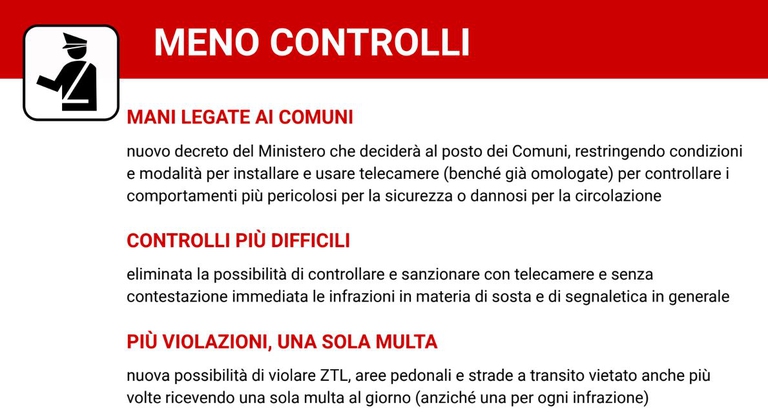
If on the one hand some penalties are toughened such as those for those who drive "drunk" or "drugged" (a media-style repressive approach, focusing on the causes of only 5% of accidents), on the other hand those who systematically violate the rules are made easier, for example by imposing a single fine for those who violate pedestrian areas even several times a day.
Furthermore, what is worrying is the lack of protection for those who are most vulnerable (i.e. pedestrians, cyclists, children, elderly people, people with disabilities), while active and sustainable mobility and the strengthening of public transport are severely limited.
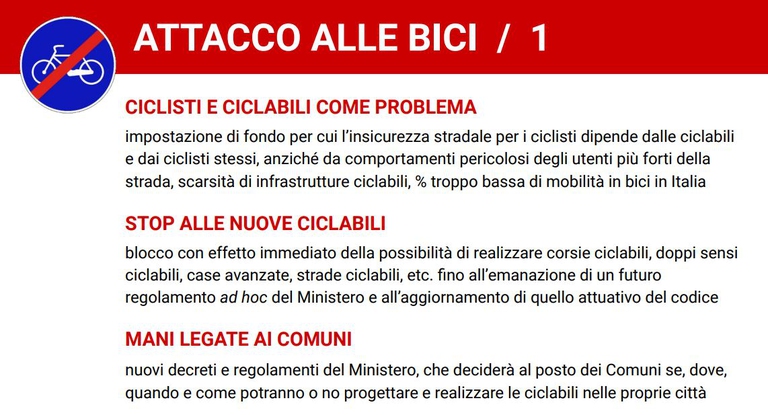
The appeal of the families of victims of road violence
Lacks therefore a decisive intervention on the speed moderation, which we remember is the leading cause of death together with distracted driving and failure to give way to pedestrians at crossings.
A appeal important was launched to the government, parliament and municipalities by hundreds of technicians (urban planners, architects, engineers, lawyers, public policy experts, etc) also signed by 17 associations and foundations of family members of victims of road violence.It is precisely the latter who remind us that «according to the Highway Code, speed limits must be established on the basis of a single criterion: “for the protection of human life” (art.142, paragraph 1) which, being the most precious good, comes before any other interest».
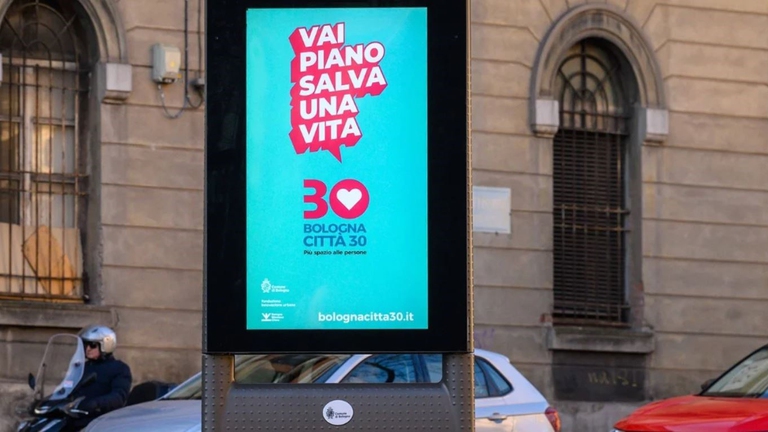
We must therefore ask ourselves about values and priorities expressed by the MIT proposal, taking advantage of these testimonies.Those who have been fighting on the front lines for years in Italy and Europe for road safety do so as a "form of active memory for loved ones who are no longer here and how civil commitment for the entire community".
MIT and the commercials without seat belts
During the debate on the reform of the Highway Code, the MIT launched three commercials on road safety aimed at in particular to young people, in which we want to show the behaviors that should be followed while driving and those that are dangerous.The campaign was carried out, among other things, in collaboration with the Carabinieri.Small detail: none of the protagonists wear a seat belt (not even in the version relating to good rules to follow).A grotesque slip that has caused controversy, concern and a good dose of discouragement.
